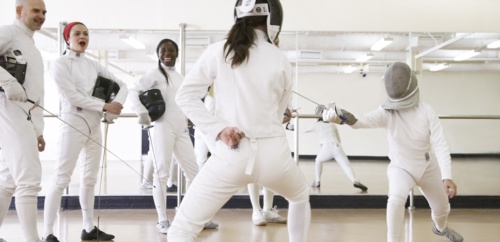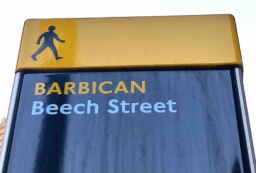Ever fancied yourself as a swashbuckling fencer? The historical drama ‘Chevalier’ based on the life of Black master fencer Chevalier de Saint-Georges opened in UK cinemas today on the anniversary of his death in 1799. Born in Guadeloupe, West Indies, the son of an African slave and a French plantation owner, he rose to dizzy heights and was Marie Antoinette’s court favourite. What’s Hot London? wanted to walk in his shoes for a day so we headed to London Fencing Club to be schooled in the dazzling skills of this dashing swordsman. And we spoke to sabre coach Alex Bela about the history of this cultured sport and its enduring appeal.
Fencing schools date back to the 12th century. The French, Spanish and Italian schools are rooted in its history and origins and produce excellent fencers to this day. English fencing came to prominence during the Renaissance and our earliest fencing school was Angelo’s School of Arms in Soho, London, established in 1763. At that time, it only admitted aristocrats who until then had to travel to Italy, Spain and France for top quality training. Today, fencing is for everyone, regardless of class, race or background.

This prestigious fencing club is London’s most popular and has 300 active members. It offers beginners, intermediate and advanced level courses for children and adults and both private and group classes. What’s Hot London?’s Eddie Saint-Jean met sabre coach Alex Bela who guided him through the basics and gave a breakdown of the gentlemanly culture and code of conduct of this graceful combat sport. Having represented Romania at European and World level as well as coaching Britain’s elite fencers of all ages, he has a vast well of knowledge. He steered Cambridge University to three consecutive fencing championships, so when he says he has experience at all levels, he can certainly back it up.
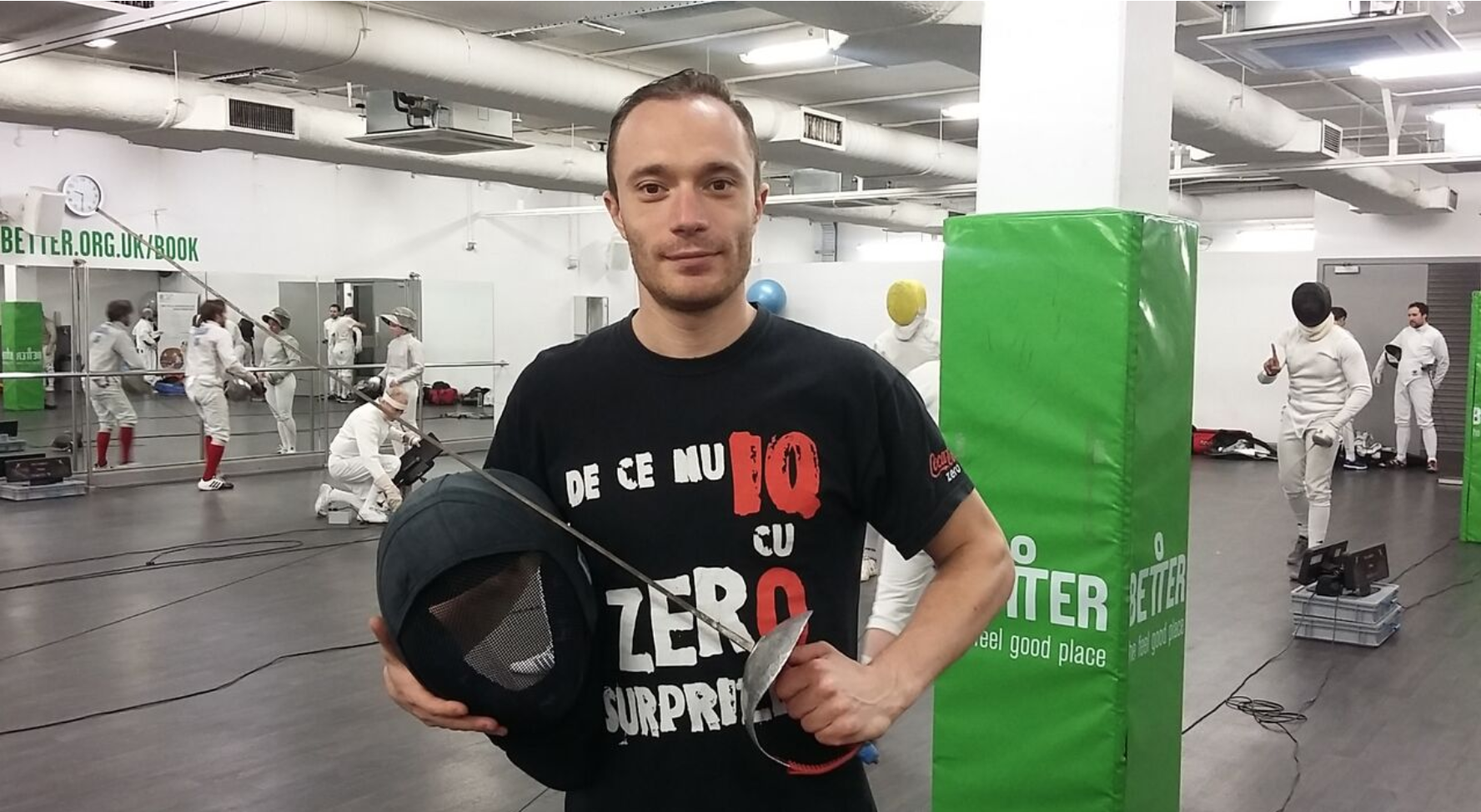
Fencing Master & sabre coach Alex Bella
Foul-mouthed types be warned because swearing can get you a black card, which is a sending off. Like football, there are yellow and red cards: yellow for minor infractions and reds for major naughties.
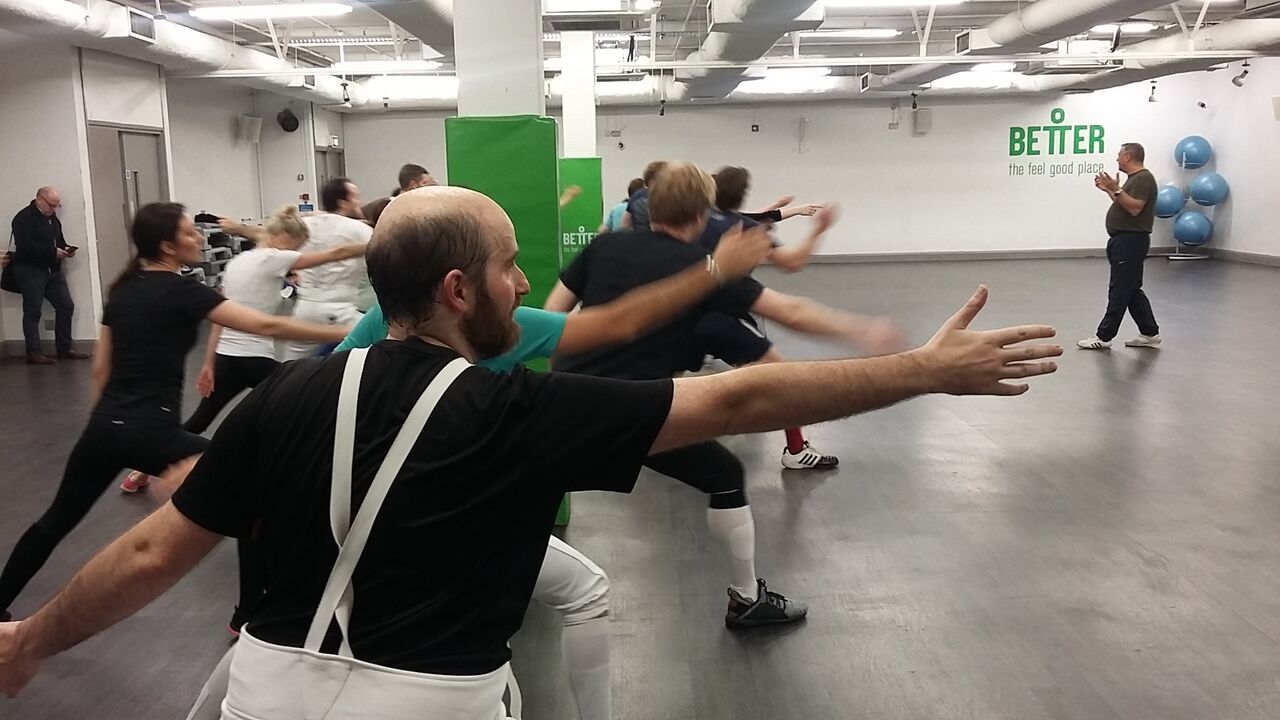 Warm up routines before the class starts
Warm up routines before the class starts
And if you’re expecting to turn into a swashbuckling Chevalier overnight, it isn’t going to happen. It’s a glamorous sport, with a romantic history but requires patient attention to the necessary steps before you learn to thrust, parry and riposte with defensive grace and point-scoring accuracy. Alex showed us some basic steps, starting with the initial stance with feet touching at the heels at a 90 degree angle and then ‘En Garde!’ you take a small step forward, back leg in position and lead arm lunging.
How you lunge with your sword will depend on whether it’s an epee, foil or sabre. An epee fencer can hit their opponent anywhere on the body and tend to be patient, picky fencers. Foil fencers aim for the upper torso but not the arms or head. They wear a distinctive sleeveless silver jersey to mark out these target areas. Sabre fencers can hit anywhere on the upper torso including the head and tend to be more dynamic, action-orientated fencers – the opposite of epee fencers.
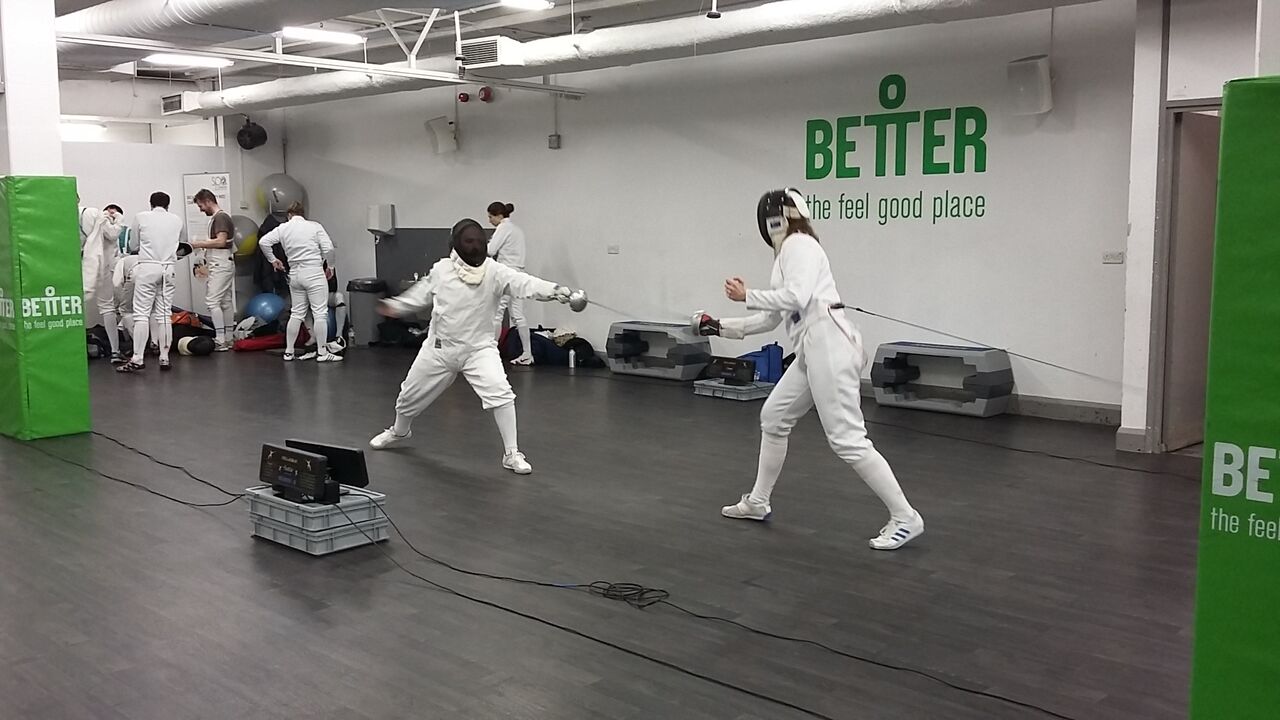 “En garde!” Electronic sensors indicate when you hit the target
“En garde!” Electronic sensors indicate when you hit the target
Alex tells us fencing is thriving in London even though the GB sporting authorities decided to cut funding after the 2012 Olympics – despite the fact the team performed wel! London Fencing Club is an amateur club and there are concerns about the lack of financial incentives for fencers who progress through the ranks and wish to enrich their development by participating in overseas tournaments. Travelling is one of many expenses. Bear in mind, the likes of Russia and Romania have professional fencers on full funding, which helped them catch up with the French and Italian fencers who have dominated the sport for centuries.
If you’re still inspired and want to try out the most gentlemanly of sports, then remember, London has its very own fencing club a few minutes from Old Street Station. London Fencing Club Finsbury Leisure Centre, Norman Street,London, EC1V 3PU

